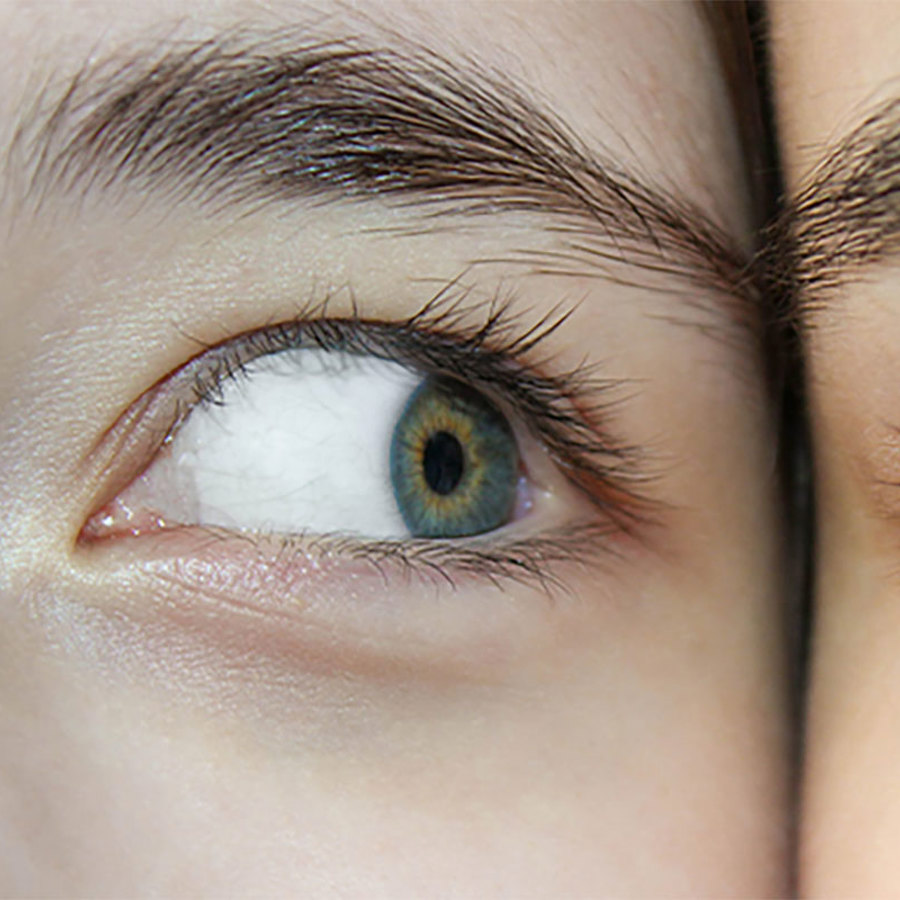
How could a person have two very different appearing halves of their face?
September 16, 2004

- Related Topics:
- Chimera,
- Mosaicism,
- Rare events,
- Appearance
A curious adult A curious adult
“When I was a camp counselor a few years back, one of the campers had light hair and a green eye with lighter eyelashes/eyebrows on one side and darker hair and a brown eye with darker eyelashes/eyebrows on the other. Also the lighter side had more freckles. The hair on her head was not bi-colored exactly symmetrically, but pretty close. How is this physiologically possible? I’ve never stopped wondering and the girl said that doctors couldn't explain it.”
Sounds to me like your camper could have been either a mosaic or a chimera. Given her differences, the most likely answer is chimera.
Chimeras and mosaics are people who have two sets of cells in their body, each with different sets of DNA. Mosaics are very common; chimeras are thought to be very rare.
The difference between the two is how different the DNA is between the different cells. A mosaic has only small DNA changes between each set of cells. In a chimera, each set of cells (and their DNA) is as different as two siblings.
So how does a chimera or a mosaic happen? A mosaic happens when very early in development, a cell has a small DNA change. This is actually very common and we are probably all mosaics to some extent.
How can a change in one cell have such a big impact? To answer this, we need to remember that each of our cells from early in our development give rise to trillions of new cells. For example, if the DNA of a single cell were altered when an embryo was at an 8-cell stage, then around 1/8 of that person, or 12 trillion cells, would carry the changed DNA.
As I said, we are all probably mosaics. Chimeras are thought to be much more rare. No one knows how common they are because the differences are usually very subtle.
One source I saw claimed that there were only 30 documented cases as of 2003. Of course, it is hard to know whether this means there aren't many chimeras, hardly anyone is taking DNA tests or, most likely, a combination of the two.
Chimeras are so uncommon because of how they are made. Chimeras are made when two embryos fuse together to create a chimera. In other words, fraternal twins become a single person. In this case, large swaths of a person can have very different DNA from other parts of the body.

From your description of the camper, it sounds like she was the result of a fusion of two embryos at a very early stage of development. As she developed, half her cells used one set of instructions and the other half used the other set of instructions. The result was the camper you met – essentially two sisters rolled into one.
An interesting side note here is that almost all females are mosaics. As you know, women have two X chromosomes and men have an X and a Y chromosome. If nothing were done, women would have twice as much of what every gene on the X chromosome makes as men.
To get around this, nature has devised lots of ways to get a male and female’s X chromosomes in sync. In most mammals (including humans), all the genes are shut off or inactivated on one of the two X chromosomes creating something called a Barr body. This inactivation happens in a random way at a very early stage of development.
What happens is that when a budding young female is made up of only a few cells, each cell shuts off one of its X chromosomes at random. This means that trillions of cells use one of the X chromosomes, and trillions of cells use the other X chromosome.
The classic example of this X inactivation is calico cats. Calico cats are almost always female. Their hair color gene is found on the X chromosome. At an early stage, different cells have different X chromosomes shut off leading to different cells making different amounts of hair pigment. What you get from this is the calico’s coloring pattern.

Hope this answer as well as the one below helps answer your question. Even though your camper is an extreme case of chimerism, imagine what happens when a male and female embryo fuse together to create a hybrid. A confirmed case of this happened in 1998 with in vitro fertilization.1

Author: Dr. Barry Starr
Barry served as The Tech Geneticist from 2002-2018. He founded Ask-a-Geneticist, answered thousands of questions submitted by people from all around the world, and oversaw and edited all articles published during his tenure. AAG is part of the Stanford at The Tech program, which brings Stanford scientists to The Tech to answer questions for this site, as well as to run science activities with visitors at The Tech Interactive in downtown San Jose.
 Skip Navigation
Skip Navigation
